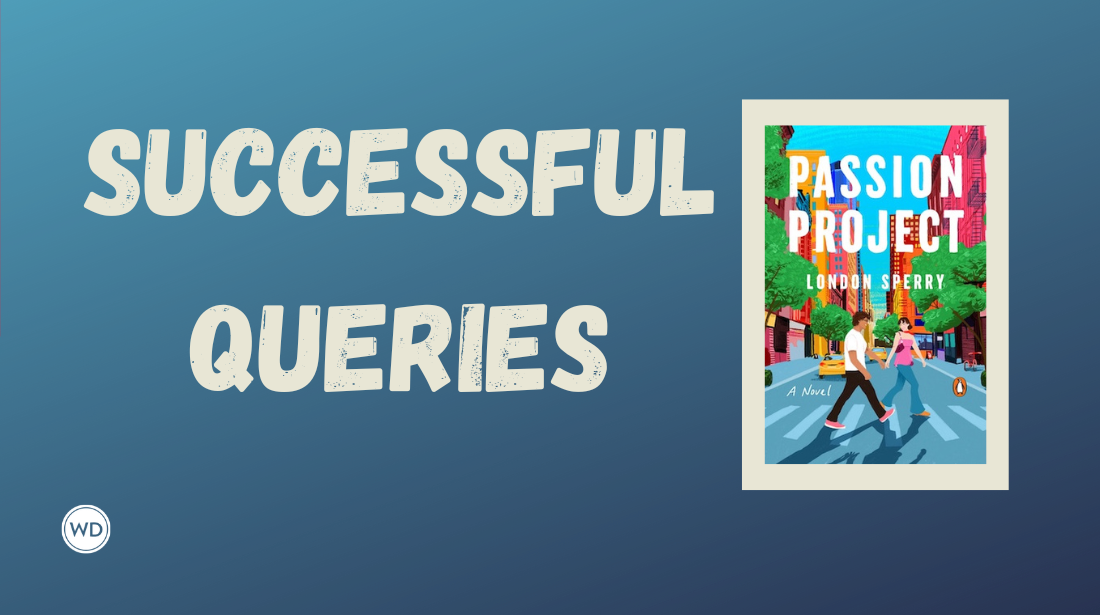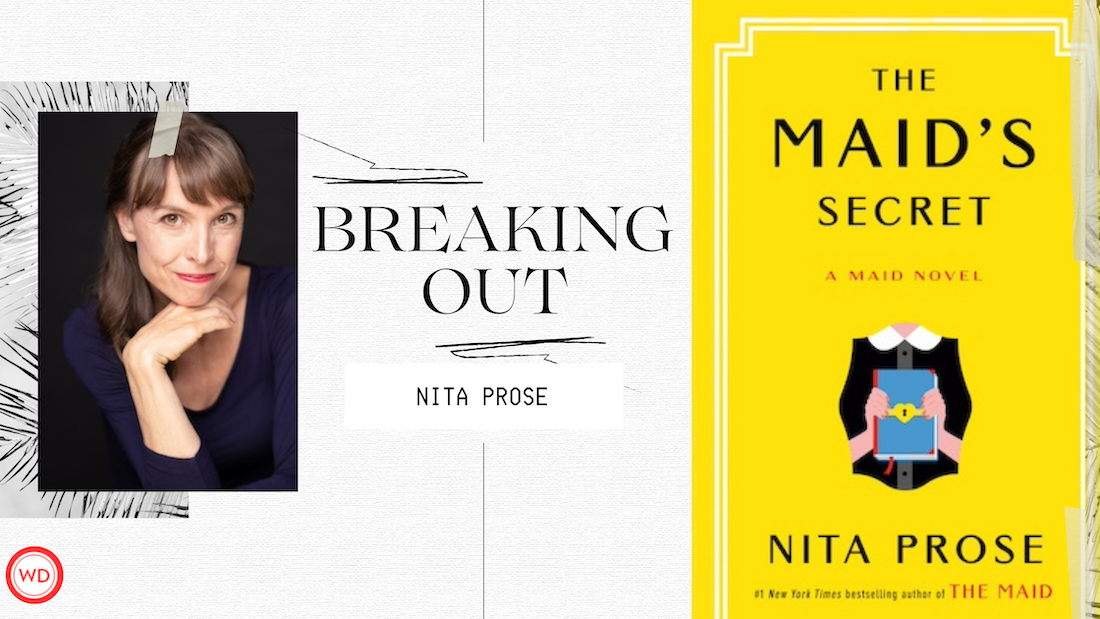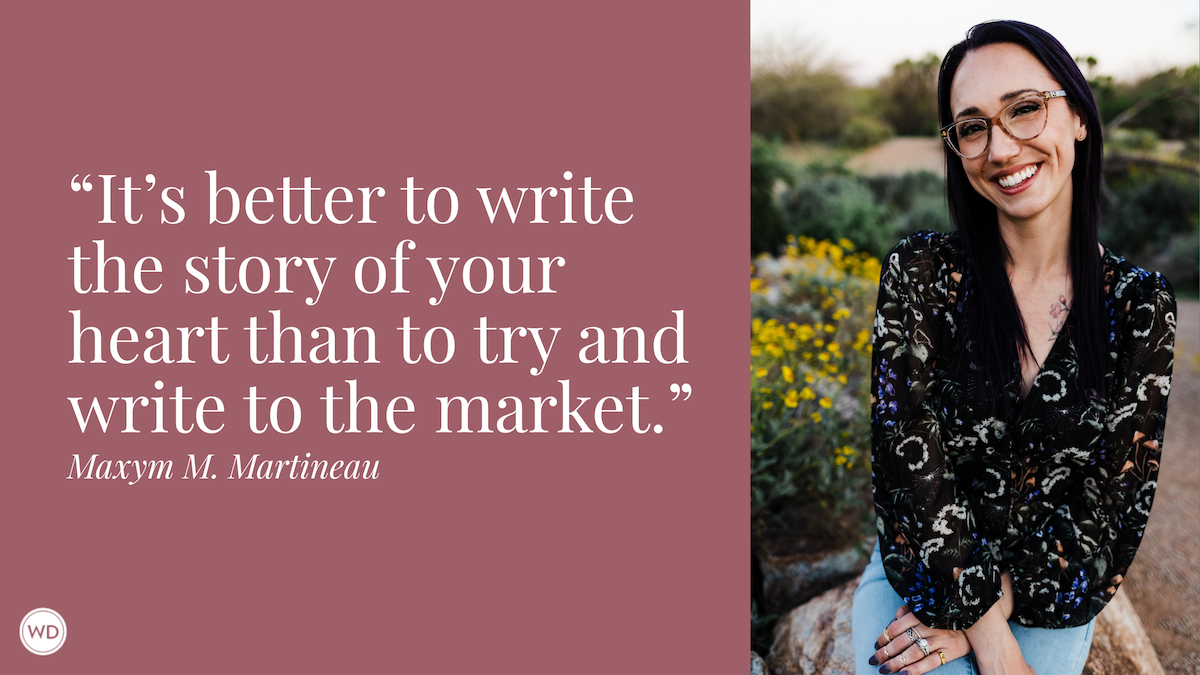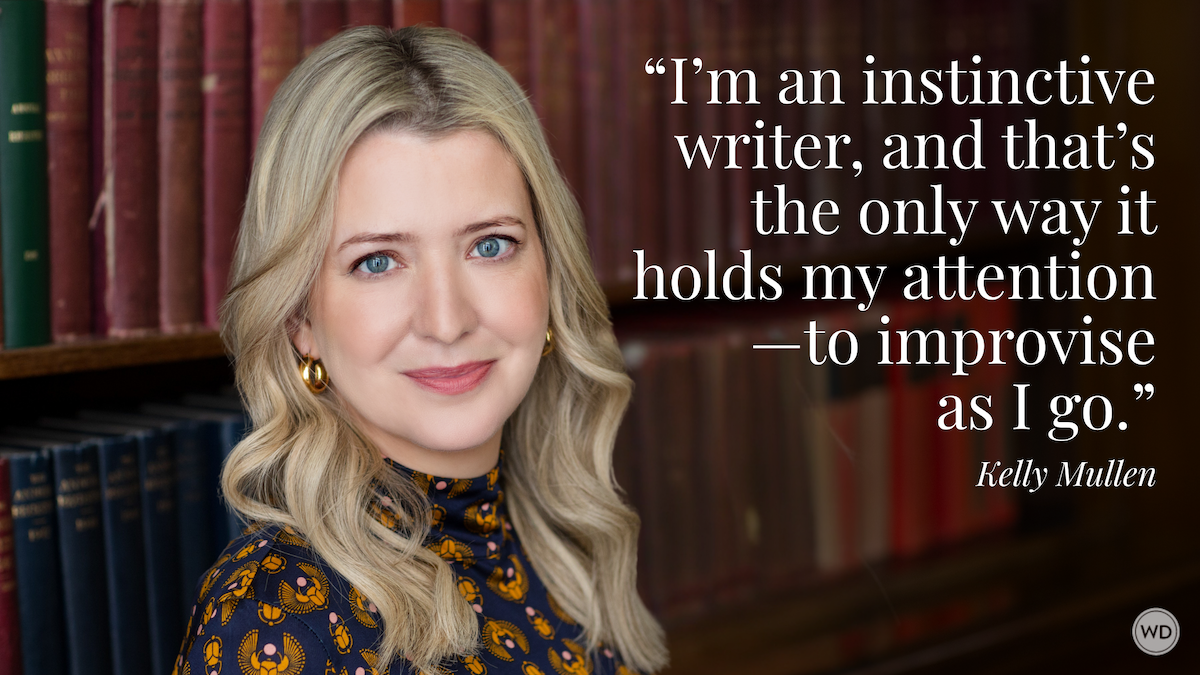[This article first appeared in the January/February 2025 issue of Writer's Digest magazine.]
In the last 30+ years that I’ve worked as a book critic, the publishing industry has experienced some radical changes. The birth of digital publishing and the rise of e-books, the sad demise of independent and chain brick-and-mortar bookstores, and the emergence of audiobooks, have irrevocably restructured the publishing world.
But arguably the biggest transformation in writing and publishing fiction over the last few decades is more subtle—and so much more profound.
It’s the speed in which narratives progress, both in terms of content and structure. Everything is faster, more streamlined, built for those readers with the attention span of mayflies.
Welcome to the brave new world of instant gratification: SMS language, 280-character (or shorter) tweet lengths, and endlessly scrolling through Instagram Reels and TikToks, swiping after mere microseconds if the content isn’t interesting in some way.
To the surprise of no one, our attention spans are getting shorter and shorter and …
What was I saying again?
The average human attention span decreased by nearly 25 percent from 2000 to 2015, shrinking from 12 seconds in 2000 to around 8 seconds in the mid-2010s.
For comparison, a goldfish’s attention span is 9 seconds.
The reasons for this fleeting focus are myriad. A 2019 study from researchers at the Technical University of Denmark found that the inundation of information bombarding those living in a digitalized world has profoundly narrowed people’s attention spans.
“The negative effects of social media and a hectic news cycle on our attention span has been an on-going discussion in recent years … A new study … finds that our collective attention span is indeed narrowing, and that this effect occurs—not only on social media—but also across diverse domains including books, web searches, movie popularity, and more.”
In a Time.com article from 2023 entitled “Why Everyone’s Worried About Their Attention Span—and How to Improve Yours,” Adam Brown, co-director of the Center for Attention, Learning, and Memory at St. Bonaventure University in New York, is quoted as saying increasing inattention has reached “epidemic” levels.
And this epidemic of narrowing attention spans has negatively impacted our reading habits in obvious—and deeply concerning—ways. Younger readers, for example, are reading less.
According to a survey done by the NAEP (National Assessment of Educational Progress) in 2019–2020, the amount of young people who read for fun has declined from 35 percent in 1984 to barely 17 percent.
Additionally, the results of a survey conducted by Today.yougov.com in December 2023 found that nearly half of Americans (46 percent) didn’t even read one book that year.
This life of endless distractions has undeniably impacted the way in which we perceive the world—and has influenced our ability to focus on anything that doesn’t hold our attention for more than a few moments.
As our way of life has slowly but surely transformed many of us into bipedal mayflies, so too has the $28.1 billion publishing industry (savvily) changed to better serve the shifting needs of its readers.
As a book critic who has reviewed more than 10,000 titles, I’ve seen these changes firsthand—and if you’ve read a diversity of fiction releases from the ’70s, ’80s, and ’90s, you’ve probably also realized how remarkably different contemporary releases are compared to those from just a few decades ago.
Here are some things to consider as you’re writing, or planning to write, your next novel.
Books are getting shorter.
A study by WordsRated in June of 2022 looked at titles that had made it to the New York Times bestseller list between 2011–2021. The results were telling: the average length of the NYT bestseller decreased by 51.5 pages from 2011 to 2021, from 437.5 to 386 (11.8 percent). Also, long books (more than 400 pages) are all but disappearing—the share of shelf-bending bestsellers went from 54 percent in 2011 to just 38 percent in 2021, a 30 percent drop.
I’ve reviewed more novels under 300 pages in the last year than the previous two or three years combined—especially when it comes to self-published releases. Getting assigned a novel to review like Ken Liu’s Speaking Bones (weighing in at 1,072 pages) is becoming vanishingly rare.
I don’t think this is a trend either: It’s permanent. There will always be a place for doorstop reads—particularly in certain categories like epic fantasy and grand-scale science fiction—and established writers like Stephen King and Barbara Kingsolver will always have more leeway when it comes to novel length. (I’m looking at Donna Tartt’s 775-page The Goldfinch on my bookshelf as I write this.)
So, the shorter your novel is, in this mayfly reader world, the more the chances are of it not only being published but being commercially successful as well.
Novels of all categories are being structured more like thrillers.
Three decades ago, novels frequently took their sweet time getting to the hooks. Epic fantasy novels, in particular, may have been 100 pages deep before readers got to the big hook. But, taking their cue from mainstream thrillers—which have hooks as close to the beginning as possible, sometimes even in the first sentence!—writers of novels in all categories have been restructuring their works to mimic thrillers, that is to say to read like highly palatable, fast-paced, page-turners that readers consume like potato chips. The indicators are evident in any category you read, be it romance, mystery, horror, or mainstream fiction. The hooks in recently released novels are now routinely very close to the beginning, almost always imbedded in the very first scene, which is usually action-packed or emotionally intense in some way.
Octavia Butler’s bestseller Kindred is a perfect example. The hook is right there in the first sentence!
I lost an arm on my last trip home.
Gillian Flynn’s Gone Girl is another great example, with an unforgettable first line:
When I think of my wife, I always think of her head.
The same thing is true with All the Colors of the Dark, Chris Whitaker’s recently released masterwork:
From the flat roof of the kitchen Patch looked out through serried pin oaks and white pine to the loom of St. Francois Mountains that pressed the small town of Monta Clare into its shade no matter the season. At thirteen he believed entirely that there was gold beyond the Ozark Plateau. That there was a brighter world just waiting for him.
Though later that morning, when he lay dying in the woodland, he’d take that morning still and purse it till the colors ran because he knew it could not have been so beautiful. That nothing was ever so beautiful in his life.
Pick up any commercially successful novel—regardless of category—published in the last few years and I’ll bet you that there is a solid hook of some kind on the very first page: an intriguing statement, an intense or memorable scene, the seed of a mystery, etc. Why are writers across all categories of fiction doing this religiously now? Because, like a trending TikTok meme, these hooks grab the reader’s attention quickly and, ideally, get them so emotionally invested, or simply curious, that they read the entire story.
And while this is certainly nothing new—I can list dozens of classics with iconic hooks right in the first sentence (like E. B. White’s Charlotte’s Web: “ ‘Where’s Papa going with that ax?’ said Fern to her mother as they were setting the table for breakfast.”)— the takeaway here is the frequency in which this is happening now, which is to say almost all the time.
In addition to placing hooks as early in the story as possible, the majority of chapter endings in those aforementioned commercially successful novels are now often concluded with some kind of bombshell, be it a jaw-dropping revelation, a cliffhanger, a powerful statement, an unforgettable visual, etc. I’ve seen this in all categories of genre fiction (romance, fantasy, horror, SF, mystery) as well as mainstream fiction. This may not seem to be significant but cumulatively it creates a novel that readers literally can’t put down. Thriller writers like Harlan Coben, Lee Child, and Jeff Abbott have been doing this for decades—because it works! If your novel has consistently powerful chapter endings, readers will find it virtually impossible to put your book down—and in a world filled with DNFs, this is a huge win!
As an example, let’s take the first and last sentences from the first chapter of Rob Hart’s recently released Assassins Anonymous. The first few sentences couldn’t be any more effective as a hook:
Adrenaline is the ultimate painkiller. It doesn’t last very long. But in those white-hot moments when your gut gets pierced by a bullet, or a knife cleaves your skin, you would be amazed at how little you feel it.
And Hart ends the first chapter as strongly as he began it with a narrative brass knuckle punch to the skull:
I press my hand to my gut.
Hot blood gushes between my fingers.
This wasn’t what I expected from the day.
Hart continues to use this technique throughout the entire novel—Chapter Two, for example, ends with “As I turn, a boot smashes into my chest.”—which creates a high-intensity storyline that is exceedingly difficult to put down and walk away from. I liken this to trying to get off a roller coaster as it is rocketing through a particularly heart-stopping sequence of vertical loops. No one would want to stop the ride at that point. They’re going to keep reading!
Chapter lengths seem to be getting shorter as well, although this isn’t as evident in categories like fantasy, which still feature chapters that can be up to 50 pages long and longer. Shorter chapters give readers less opportunities to be bored—and, in theory, keeps narrative momentum brisk.
Look at Whitaker’s aforementioned All the Colors of the Dark. Although the novel is 592 pages, there are 261 chapters. That averages out to be just over 2.2 pages per chapter!
Additionally, shorter chapters coupled with alternating POVs in each chapter keep the story fresh and, hopefully, readers on the edge of their seats.
Lastly, just like thrillers, is the focus on intensity level, be it internal conflict, external chaos, emotional turmoil, etc. Regardless of category, an utterly readable novel in today’s market will have a high-intensity level throughout the entire story—ideally tension on every page. If you’re a writer, you don’t want any extended sequences that are low energy—that’s the kiss of death. You probably shouldn’t embrace your inner Tolkien and spend 10 pages describing the attributes of a tree if your goal is to write a commercially successful novel.
Everything is shorter—except title length.
Not surprisingly, I’ve seen a marked decrease in the length of synopses, back cover copy, and review excerpts … even press releases are getting shorter. Everything is more concise, more condensed, more to the point. The days of back cover copy filling up the entire back cover are long gone. Is anyone really going to read it? (Answer: No, probably not.)
I’ve written thousands of reviews for companies like Publishers Weekly, Kirkus, the Chicago Tribune, and BN.com—and many of those review excerpts have appeared on book covers. While not a radical change, I have noticed that over the last decade or so publishers are using fewer words in these excerpts. Back in 2011, for example, HarperCollins released The Breaking by Marcus Pelegrimas and they used an excerpt from a review I wrote for BN.com on the front cover. It was three full lines of text—21 words! I rarely see that any more on front covers. Nowadays review excerpts are generally just a few words: “extraordinary,” “A masterwork,” etc. While not a big deal, it is indicative of the trend towards marketing to mayfly attention spans.
And, strangely enough, as all of these elements are decreasing in size, book titles are getting longer. An article published on TowardsDataScience.com in 2019 found that fiction titles are getting longer as the actual page counts are shrinking. The researcher who wrote the article calculated the title lengths of all New York Times bestsellers from 2011 and found that the average title increased from 2.5 words to 3 words during that time. The number of bestsellers with seven or more words was also noteworthy: The Girl Who Kicked the Hornet’s Nest, A Leaf on the Wind of All Hallows, Two Years Eight Months and Twenty-Eight Nights, and My Grandmother Asked Me to Tell You She’s Sorry, to name a few.
So, what’s the big takeaway here? As a writer, you should know your audience—or, more specifically, understand your audience’s attention span. Utilize the tools and techniques that will keep readers engaged and turning pages.
Ask yourselves these questions before you submit anything for publication:
• Have I trimmed the narrative fat off my story?
• Is the initial hook as close to the beginning as I can get it?
• Do my chapters end with a brass knuckle statement, intriguing image, or jaw-dropping revelation?
• Do I have some form of intensity powering all of my sequences?
• Is my synopsis and/or back cover copy focused and concise?
If you’ve actually read this entire article to its end, congratulations. You’re not a mayfly yet!
Paul Goat Allen has worked in the publishing industry for the last three decades in a variety of positions, including publicist, blogger, editor, and publisher. As a genre fiction book critic, he has written more than 10,000 reviews for companies like Publishers Weekly, Kirkus, the Chicago Tribune, and BN.com, and interviewed hundreds of authors. He has published stories in a wide variety of categories, from crime fiction to romance to folkloric fantasy. He is also an adjunct instructor and mentor in Seton Hill University’s Writing Popular Fiction graduate writing program.








